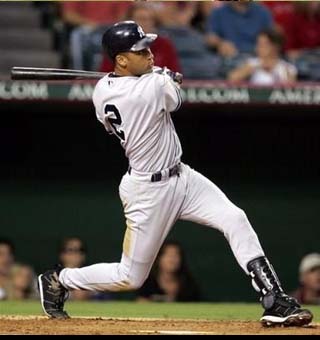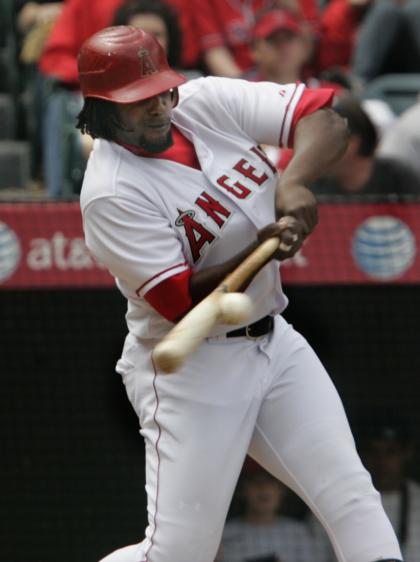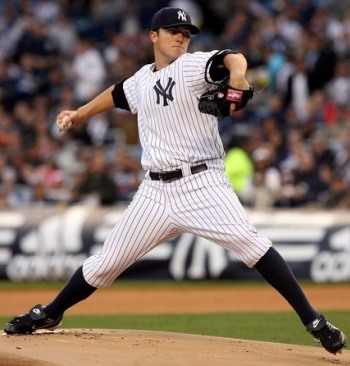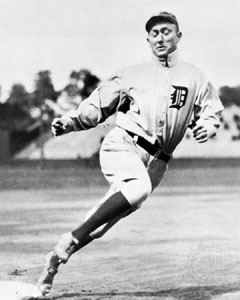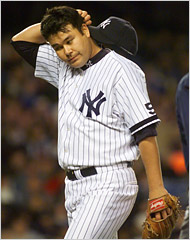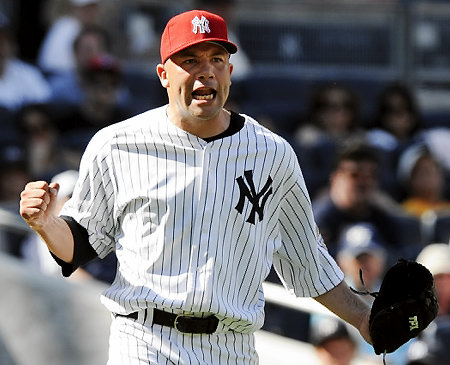I have posted this column in some form several times over the years, but thanks to the fact that time marches on, I can actually improve my December 20th All-Birthday Team by incorporating some recent seasons from players who share that date. Let's see how much better my team looks as 2009 draws to a close...
Baseball-Reference.com is a wonderful website. They've got stats for every major leaguer who's ever played, plus managers and notable personalities from the Hall of Fame, like Negro Leaguers, Executives and even some umpires. They've got the pages for players, teams, franchises and leagues throughout history, even short-lived entities like the Players' League and the American Association. They've got an Oracle of Baseball, which will give you a Six-Degrees of Kevin Bacon type of connection between any two players in history, say, Kevin Barker and Count Sensenderfer, for example.
But one of the coolest things they have is the Birthday Page, wherein you can find every major league player in history who shares your birthday. Given that my birthday was just yesterday, I thought I would share with you my All-Birthday Team. These are (in my estimation) the best seasons from players born on December 20th, compiled into a team, so that I have sufficient innings and plate appearances to play a 162-game schedule.
Note: OPS+ and ERA+ are the league and park adjusted OPS (On-Base Plus Slugging) and ERA for that season, so you have an idea of what the numbers really mean in context. The .349 batting average Spud Davis put up in 1933, during the offense-crazed Depression Years, does not mean nearly as much as the .352 Cecil Cooper hit in 1980, a relatively down offensive time. Their adjusted OPS numbers (55% better than average compared to "only" 34% better) help to compensate for that. Anywho, this is what I came up with:
*David Of Jesus had his best year in 2008, according to adjusted OPS, so we've replaced 2007's campaign with it, even though it's about 130 plate appearances shorter. We've haven't got a great bench, but the pitching will be much improved with this iteration, so I think we can compensate for the lost plate appearances with defensive substitutions. More on this later. Also, in case you're curious, Aubrey Huff's 2008 performance (.304/32/108) was almost exactly as good as his 2003, but we got a few more games and plate appearances from 2003, not to mention a slightly higher adjusted OPS, so I decided to stick with what I had.
Starting Lineup PA Avg OBP SLG R HR RBI SB OPS+
C G. Hartnett (1930) 578 .339 .404 .630 84 37 122 0 144
1B C. Cooper (1980) 678 .352 .387 .539 96 25 122 17 155
2B J. Williams (1899) 689 .355 .417 .532 126 9 116 26 159
3B D. Wright (2007*) 711 .325 .416 .546 113 30 107 34 150
SS YOUR NAME HERE
OF O. Gamble (1977) 470 .297 .386 .588 75 31 83 1 162
OF H. Stovey (1889) 634 .308 .393 .525 152 19 119 63 161
OF D. DeJesus (2008*) 577 .307 .366 .452 70 12 73 11 118
DH A. Huff (2003) 706 .311 .367 .555 91 34 107 2 139
This is a pretty darn good team. Or at least a starting lineup.
I'll probably hit 2B Jimmy Williams, not to be confused with Jimy (one-M) Williams, erstwhile manager of the Red Sox and Astros, as he has the highest OBP. Though it may seem like he didn't hit for power, those nine homers tied him for 3rd in the NL in 1899, Williams' rookie season.
Harry Stovey will hit in the #2 spot, as he gets on base and has plenty of speed, with 63 steals, which were good for 10th in the American Association in 1889, tied with Hall of Famer Bid McPhee and Tommy "Foghorn" Tucker, but well behind league leader "Sliding" Billy Hamilton's 111 base swipes. Unfortunately Hamilton was born in February, so he can't help us. (Stovey also led the 1889 AA in Slugging %, Homers, Total Bases, Extra Base Hits, Runs, RBI and was among the league leaders in several other categories that year, one of the last for the American Association, which folded after 1891.
Cecil Cooper will bat third, keeping the precious little speed we've got together. Hall of Fame catcher Gabby Hartnett bats cleanup. No argument there, I trust. DH Aubrey Huff and 3B David Wright bat 5th and 6th, respectively, giving us a right-left-right stagger in the heart of the lineup. (This way the June 26th team can't bring in Mike Myers to shut us down in a big inning.)
Oscar Gamble and his Afro hit #7, even though he actually has the highest adjusted OPS on the team. Unfortunately he only got 470 plate appearances, and I don't want to have Jim Norris or Jack Manning batting cleanup 200 times, you know? David DeJesus hits 8th and whomever we get to play short will bat last. Alternatively, if we end up in the NL, Huff plays the outfield in place of DeJesus, who goes back to the bench. Speaking of which...
Bench PA Avg OBP SLG R HR RBI SB OPS+*Augie Ojeda's season has been replaced with his most recent work. He still can't really "hit", but he manages to eek out a double once in a while, walks more often than he whiffs (32 to 28) and can play second, third or short, as needed. He's got a couple of hundred extra plate appearances in 2009 than he did in 2007, which compensates for the playing time missed by DeJesus. Sort of.
C B. Rickey (1906) 226 .284 .345 .393 22 3 24 4 135
IF P. Baumann (1915) 260 .292 .380 .388 30 2 28 9 130
IF A. Ojeda (2009*) 309 .246 .340 .345 38 1 16 3 76
OF J. Norris (1977) 517 .270 .360 .364 59 2 37 26 101
OF J. Manning (1876) 295 .264 .281 .330 52 2 25 0 101
This isn't a terrible bench, as Manning and Norris both had reasonably productive seasons as outfielders, with Norris likely serving as a pinch runner for Hartnett or Huff if we need to eek out a late run. Paddy Baumann played a lot of 2B and 3B in his career as a backup, and hit pretty well in 1915, if not the rest of his life. Augie Ojeda, the only below-average hitter on the team, only makes it because he has exactly the same birthday as me.
Branch Rickey will become the first Player/Manager/General Manager in history, making trades from the bench. And speaking of trades...
Trade bait PA Avg OBP SLG R HR RBI SB OPS+
C B. Henline (1922) 481 .316 .380 .479 57 14 64 2 112
C S. Davis (1933) 540 .349 .395 .473 51 9 65 2 134
IF F. Merkle (1911) 604 .283 .342 .431 80 12 84 49 113
December 20th is blessed with an abundance of catching talent, but no shortstops worth their weight in lead. Not only do we have Hartnett and Rickey, but Butch Henline and Spud Davis were both good or very good at some point in their careers, and there's always a team that needs catching. Maybe I can get the July 23rd Team to trade me Pee Wee Reese or Nomar Garciaparra for Spud Davis. Heck, they could have Henline straight-up for a 1924 vintage Hod Ford. At least I'd have something worth running out there every day. Somebody has to bat 9th, right?
More likely I'll just have to press Merkle into service as the shortstop. He was generally described as an agile firstbaseman and was not a hulk of a man, though at six feet, 190 lbs, he was a bit large for his day. Hopefully he doesn't make any bonehead plays there.
I was tempted to put Snooks Dowd on the team because he attended Lehigh University, like me, and because a team with a Spud, a Branch, a Gabby, an Augie, a Butch and a Paddy could use a Snooks as well, if only to make it entertaining to watch them lose. But alas, Snooks had only three hits in 18 career plate appearances, and would therefore be a waste of a roster spot.
The pitching was not quite as easy to fill out, and whomever we don't trade for shortstop help is going to have to net us a solid reliever or two.
Rotation W L Sv ERA IP BB SO ERA+
SP G. Pipgras (1928) 24 13 3 3.38 300.7 103 139 111
SP J. DeLeon (1989) 16 12 0 3.05 244.7 80 201 119
SP J. Shields (2008*) 14 8 0 3.56 215.0 40 160 124
SP B. Laskey (1982) 13 12 0 3.14 189.3 43 88 115
SP J. Manning (1876) 18 5 5 2.14 197.3 32 24 105
*James Shields was just slightly better in 2008 than he had been in 2007, including tying for the AL lead with two shutouts, so we've updated his line. He also pitched reasonably well in the playoffs, though he went 0-2.
Yes, that's the same Jack Manning who's also a backup outfielder, and I made a point to pick a season in which he was worthwhile as both a hitter and a pitcher.
George Pipgras had his best season in 1928, leading the AL in starts, Wins, Innings, Hits allowed and batters faced. Pipgras was one of many players who were traded to the Yankees from the Red Sox in those days and who promptly became, if not a star, then at least a very useful regular. Naturally, when his usefulness was all but expended, the Yankees sold him back to Boston for a hundred grand.
Jose DeLeon -well, if it weren't for bad luck, he'd have none at all. He started his career with the Pirates, four years after they won the World Series, and led the NL with 19 losses in 1985. He's traded to the White Sox in 1986 - three years after their last division title - and endures the rest of a 90-loss season with future Hall of Famers Steve Carlton, Tom Seaver, and Carlton Fisk, who are, alas, no longer great. Teammates Ozzie Guillen and Kenny Williams will have to wait to be Field Manager and General Manager, respectively, before they will see a championship.
DeLeon is traded to the Cardinals before the 1988 season, three years after their last pennant, and pitches well in a couple of lackluster seasons before again losing an NL-leading 19 games (of the Cards' 92 losses) in 1990. When he's released in 1992, it's the last-place Phillies who pick him up, of course. But before he can go to the World Series with the Phils in 1993, they trade him back to the Pale Hose, for reclamation project and former teammate Bobby Thigpen. He pitches well for the White Sox in a losing effort in the ALCS in 1993, and pitches even better in 1994, but misses the playoffs because of the Strike.
He falls apart in 1995, and is exiled to Montreal, a year after they were leading their division, and pitches a handful of poor innings before his major league career ends. Obviously, we used his best work, but with his luck, his very presence on this team could doom the rest of us to failure.
I don't know much about Bill Laskey, except that his rookie year was his best work - really his only good season - so I used that.
Bullpen W L Sv ERA IP BB SO ERA+*Narveson is a new addition, after a decent season as a swing man for the Brewers this year. He's a lefty, but not a LOOGy, as he had a bizarre reverse split, allowing a .313 opposing batting average to lefties, but holding righties to only .224. In any case, he's still pretty useful in a limited role, and we've got the roster space.
SP P. Moskau (1980) 9 7 2 4.01 152.7 41 94 89
RP M. Valdes (1997) 4 4 2 3.13 95.0 39 54 135
RP V. Colbert (1971) 7 6 2 3.97 142.7 71 74 97
SP/RP D. Pfister (1962) 4 14 1 4.54 196.3 106 123 92
SP/RP C. Narveson (2009*) 2 0 0 3.83 47.0 16 46 105
In truth, these guys are all swing men or long relievers. There isn't a single guy born on December 20th who's got more than a handful of saves in any season of his career. Maybe I can get the November 28th team to part with Dave Righetti, since they have Robb Nen, after all. With Wes Westrum and Heinie Peitz (poor kid...) on the team, they don't really need catching, but Fred Merkle could do a nice job at first base for them.
Well, enough with this exercise in silliness, but if you've got a birthday team that
can beat mine, or better yet, if you have a shortstop or a closer to offer, let me know.

